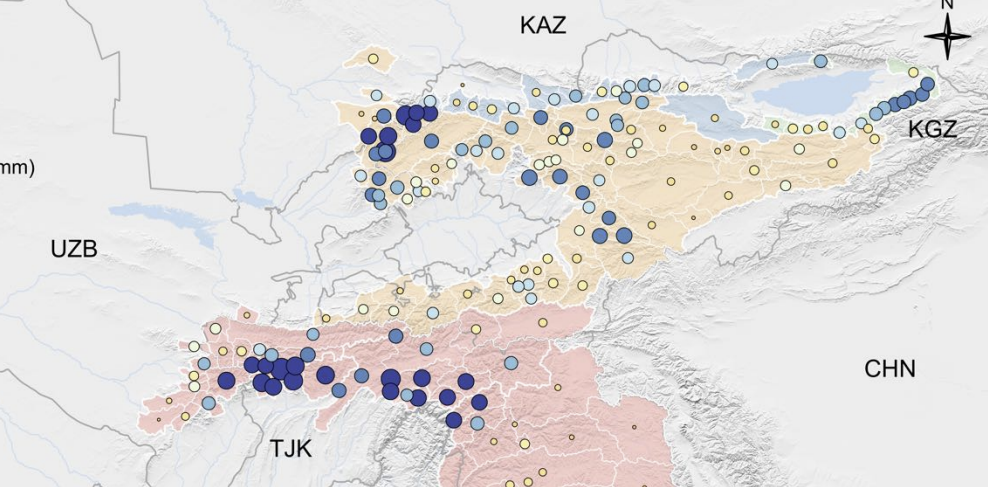Abstract
This study uses a new dataset on gauge locations and catchments to assess the impact of 21st-century climate change on the hydrology of 221 high-mountain catchments in Central Asia. A steady-state stochastic soil moisture water balance model was employed to project changes in runoff and evaporation for 2011–2040, 2041–2070, and 2071–2100, compared to the baseline period of 1979–2011. Baseline climate data were sourced from CHELSA V21 climatology, providing daily temperature and precipitation for each subcatchment. Future projections used bias-corrected outputs from four General Circulation Models under four pathways/scenarios (SSP1 RCP 2.6, SSP2 RCP 4.5, SSP3 RCP 7.0, SSP5 RCP 8.5). Global datasets informed soil parameter distribution, and glacier ablation data were integrated to refine discharge modeling and validated against long-term catchment discharge data. The atmospheric models predict an increase in median precipitation between 5.5% to 10.1% and a rise in median temperatures by 1.9 °C to 5.6 °C by the end of the 21st century, depending on the scenario and relative to the baseline. Hydrological model projections for this period indicate increases in actual evaporation between 7.3% to 17.4% and changes in discharge between + 1.1% to –2.7% for the SSP1 RCP 2.6 and SSP5 RCP 8.5 scenarios, respectively. Under the most extreme climate scenario (SSP5-8.5), discharge increases of 3.8% and 5.0% are anticipated during the first and second future periods, followed by a decrease of -2.7% in the third period. Significant glacier wastage is expected in lower-lying runoff zones, with overall discharge reductions in parts of the Tien Shan, including the Naryn catchment. Conversely, high-elevation areas in the Gissar-Alay and Pamir mountains are projected to experience discharge increases, driven by enhanced glacier ablation and delayed peak water, among other things. Shifts in precipitation patterns suggest more extreme but less frequent events, potentially altering the hydroclimate risk landscape in the region. Our findings highlight varied hydrological responses to climate change throughout high-mountain Central Asia. These insights inform strategies for effective and sustainable water management at the national and transboundary levels and help guide local stakeholders.
https://link.springer.com/article/10.1007/s10584-024-03799-y

